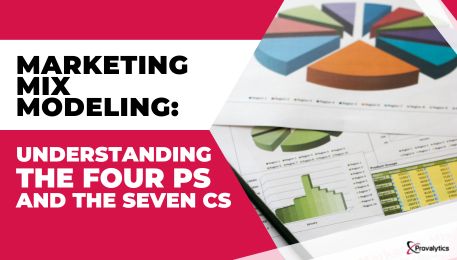Marketing Mix Modeling: Understanding the Four Ps and the Seven Cs
Marketers utilize marketing mix modeling to design an effective marketing plan. It is a tool that helps firms understand and assess the many components of their marketing strategy and how they interact to achieve their company goals. The four Ps comprise the marketing mix: product, pricing, promotion, and place. In this post, we will look at the four Ps and how the marketing mix evolved to the seven Cs.
The Original 4 Ps Model
Neil Borden, president of the American Marketing Association, initially presented the four Ps in the 1950s. Product, pricing, promotion, and place are the four Ps. The term “product” refers to the goods or services that satisfy the consumer’s demands and desires. The price of a product is the amount paid by the consumer. The type of communication employed by the marketer to offer information about the product is known as promotion. Finally, location refers to where the product is made available to the user in a convenient manner.
🚀 Yes, I Want The 2024 Playbook!

The marketing mix evolved alongside the market. The four Cs concept was designed to replace the four Ps in order to better match marketing strategy with consumer needs. Consumer, cost, communication, and channel are the four Cs. Product is being replaced by the consumer, since the emphasis has switched from selling what the corporation produces to selling what the consumer wants to buy. Price is replaced by cost since price is simply one part of the entire cost to satisfy a need or want. Communication takes the role of advertising since it is more cooperative than promotion, which can be regarded as manipulative. Finally, channel has taken the role of place, as consumers no longer need to go to a specific location to buy goods or services.
The 7 Cs Model
The four Cs model was eventually expanded to include corporation, commodity, and situation, yielding the seven Cs model. Corporation symbolizes the heart of the four Cs, as a successful corporation must be linked with the demands of its customers. The commodity symbolizes the product’s or service’s unique selling proposition. Circumstance denotes the external elements influencing the marketing approach.
The marketing mix has evolved even more to the seven Ps in the digital age. People, participation, customized, product, process, pay, and partner are the new Ps. Employees who carry out the service are referred to as people. The consumer’s involvement in the marketing process is referred to as participation. Personalization is the process of personalizing a marketing message to a specific individual. Product, procedure, and payment are identical, however partner refers to business partnership to achieve mutual goals.
Why is marketing mix modeling important?
Marketing mix modeling is important because it helps companies make informed decisions about their marketing strategies. By analyzing the effectiveness of different marketing elements, companies can allocate their resources more effectively, optimize their marketing spend, and ultimately increase sales and revenue.
What are the four Ps of marketing?
The four Ps of marketing are product, pricing, promotion, and place. Product refers to the goods or services a company offers, pricing is the amount paid by the consumer, promotion refers to the method of communication used to promote the product, and place is the location where the product is made available to the consumer.
How has the marketing mix evolved over time?
The marketing mix has evolved over time to better match the changing needs of consumers and the market. It started with the four Ps, which were replaced by the four Cs (consumer, cost, communication, and channel) to better reflect the focus on consumer needs. The four Cs were then expanded to include corporation, commodity, and situation, resulting in the seven Cs model. In the digital age, the marketing mix has evolved to the seven Ps, with the addition of people, participation, personalized, process, pay, and partner.
What are some benefits of using the marketing mix modeling?
Using marketing mix modeling provides several benefits to companies. It helps to identify the most effective marketing channels, allows for the optimization of marketing spend, and assists in predicting the impact of marketing changes on overall sales. Additionally, it can help companies to better understand their customers and tailor their marketing strategies accordingly.

